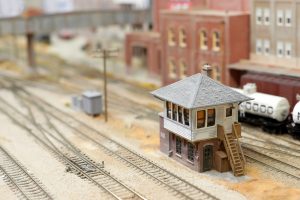Be a Good Hobbyist Neighbor
From cake decorations and jewelry to model railway signal boxes and 3D battlefields, the range of products being created by hobbyists continues to grow in line with advances in technology.

The last few months have seen a rapid expansion in the home hobbyist market – thanks in part to the impact of the pandemic – as people take advantage of innovations in laser and 3D printing systems to satisfy their creative instincts and generate a new income stream. Indeed, market data provider *Statista predicts that global revenue for this market will reach US$147bn by 2025.
Now, one of the world’s leading portable fume and dust extraction system providers is asking hobbyists to double check that the materials they are working with aren’t emitting airborne particulate that could present a health risk to themselves…or create a nuisance for neighbors.
“This is a market that is growing rapidly, thanks particularly to innovations in laser and 3D printing, which are making it simple and cost-effective to establish a home-based operation,” said Erik Derbak, Northeast Regional Sales Manager at BOFA Americas. “And when you add in access to potentially many thousands of customers through online selling platforms, it’s easy to see why this sector is so attractive to existing hobbyists and new entrants.”
Erik is encouraging hobbyists to check the BOFA website for any risks associated with their activities, because it is known that laser printing, cutting and engraving will generate particulate that can enter breathing zones and potentially lead to health risks.
By way of an example, the laser cutting of PVC will release hydrogen chloride and small amounts of phosgene, both of which are very harmful, while laser cutting and engraving acrylics will produce very strong smelling fumes, guaranteed to annoy the neighbors.
In addition, laser cutting/engraving wood will give off smoke and dust which should not be inhaled – or expelled through a vent-to-air extraction pipe. And remember, the laser cutting of MDF releases clouds of dust particles coated with formaldehyde, which can impact health.
With 3D printers, the risk arises through the release of volatile organic compounds and ultra-fine nanoparticles, which are too small for the human eye to see but which should also be captured.
BOFA has developed portable fume and dust extraction units to suit the hobbyist market, including the AD 350 for lasers and the 3D PrintPRO1 for the 3D market.
Said Erik: “It’s also worth remembering that effective portable fume and dust extraction will not only filter out potentially harmful airborne contaminants and return clean air into breathing zones, it will also help keep lasers and 3D printing equipment free from debris, enabling hobbyists to create high quality products while ensuring best value from their original investment.”
*Statista – https://www.statista.com/outlook/260/100/hobby-stationery/worldwide#market-revenue


